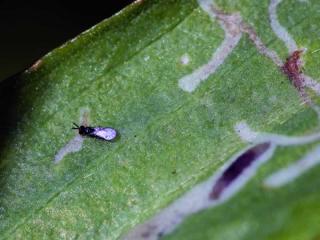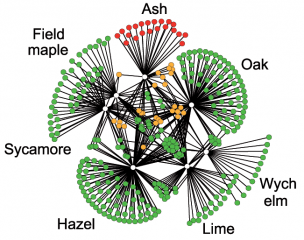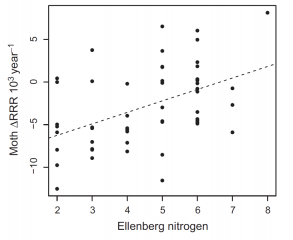Insect-Plant Interactions
Pollinator Monitoring Scheme
The Pollinator Monitoring Scheme has established two large-scale surveys; Flower-Insect Times Counts (FIT Counts) and 1km square surveys. The data from these are brought together for analysis, alongside that from recording schemes to deliver key metrics on pollinator population status and trends, including updates of the UK Pollinator Indicator at species and country-level resolution.
These activities will be coupled with ongoing links with the wider research community to facilitate use of the data in research, conservation and survey planning, and deliver a sustainable UK Pollinator Monitoring and Research Partnership (PMRP).
Database of Insects and Their Food Plants
No species exists in isolation: species are interdependent with each other and their local environment. Many of the interactions between species have been recorded by naturalists and collated in species distribution atlases. The Phytophagous Insects Data Bank (PIDB), in the 1970s, broke new ground in creating a comprehensive inventory of phytophagous insect interactions. PIDB was updated and made more accessible (as DBIF) in 2007. Gaining information on and understanding the impacts of ecological interactions has, as-yet, undeveloped potential.
The DBIF (formerly PIDB) is a collation of 47,000 feeding interactions of 9,300 invertebrate taxa with 5,700 plant taxa. This resource has been used to explain patterns of phytophagous insect richness (e.g. co-evolution and phytochemistry) and distribution patterns and trends of insects, by taking host plant into account. It has also been used in applied ecology to assess, for example, arable weeds’ contribution to farmland biodiversity and the potential impact of ash dieback on invertebrate biodiversity.
Chalcidae parasitoid prospecting a Phytomyza ranunculi leaf mine on Ranunculus lingua
Photo: Michael Pocock, CEH.
Capturing records of species interactions, such as plant-pollinator interactions, feeding relationships, fungal associations, habitat associations or even tri-trophic interactions (as above) is an
important step for the future of biological recording because such interactions are more informative than simply recording species presence.
A food web of the interactions of Lepidoptera (moths and butterflies: coloured circles) with woodland trees (white circles), as collated in DBIF
Figure: Michael Pocock, CEH.
This shows the reliance of Lepidoptera species on ash: entirely (red), partially (orange) or not reliant (green), so illustrating potential impacts of the loss of ash. The individual plant species from DBIF (for oak and lime) have been aggregated for clarity.
Effect of plant traits on the trends of monophagous moths154
Figure: Tom Oliver, CEH.
Moths that feed on plants that prefer high soil fertility (i.e. have high Ellenberg Nitrogen values) tend to fare better than those feeding on plants that prefer low fertility sites, demonstrating the cascading impact of environmental change up food chains.
Combining DBIF and biological records provides many opportunities for new research given the growing importance of food webs in ecology. A challenge is to quantify insect-plant interactions and thus avoid bias towards rare and atypical associations. Many biological records of insects are accompanied by host plant associations which provide opportunities for research on the cascading impacts of environmental change on whole food webs. Effectively monitoring insects eating non-native plants will enable us to track the colonisation of these species by new natural enemies.


